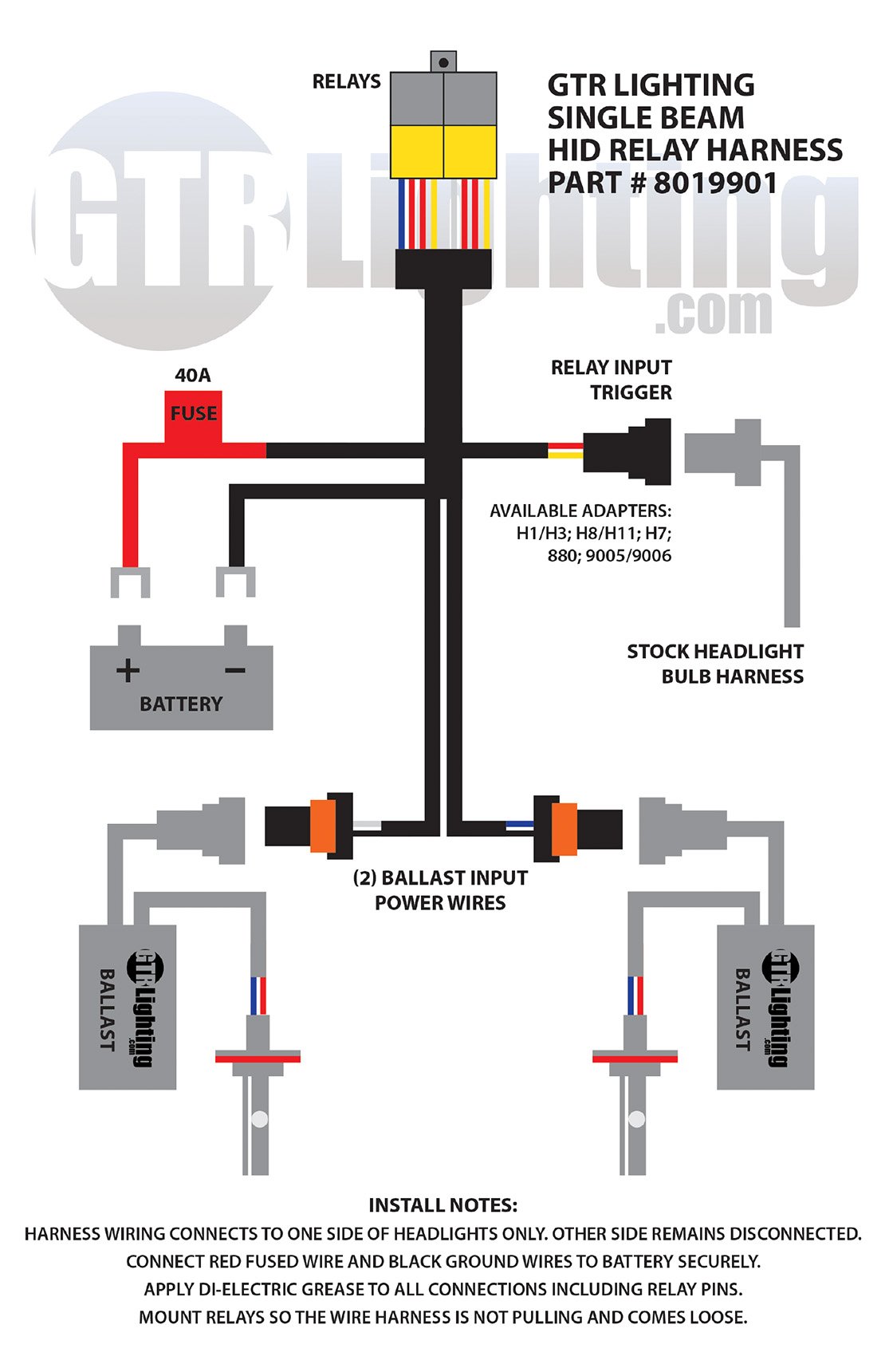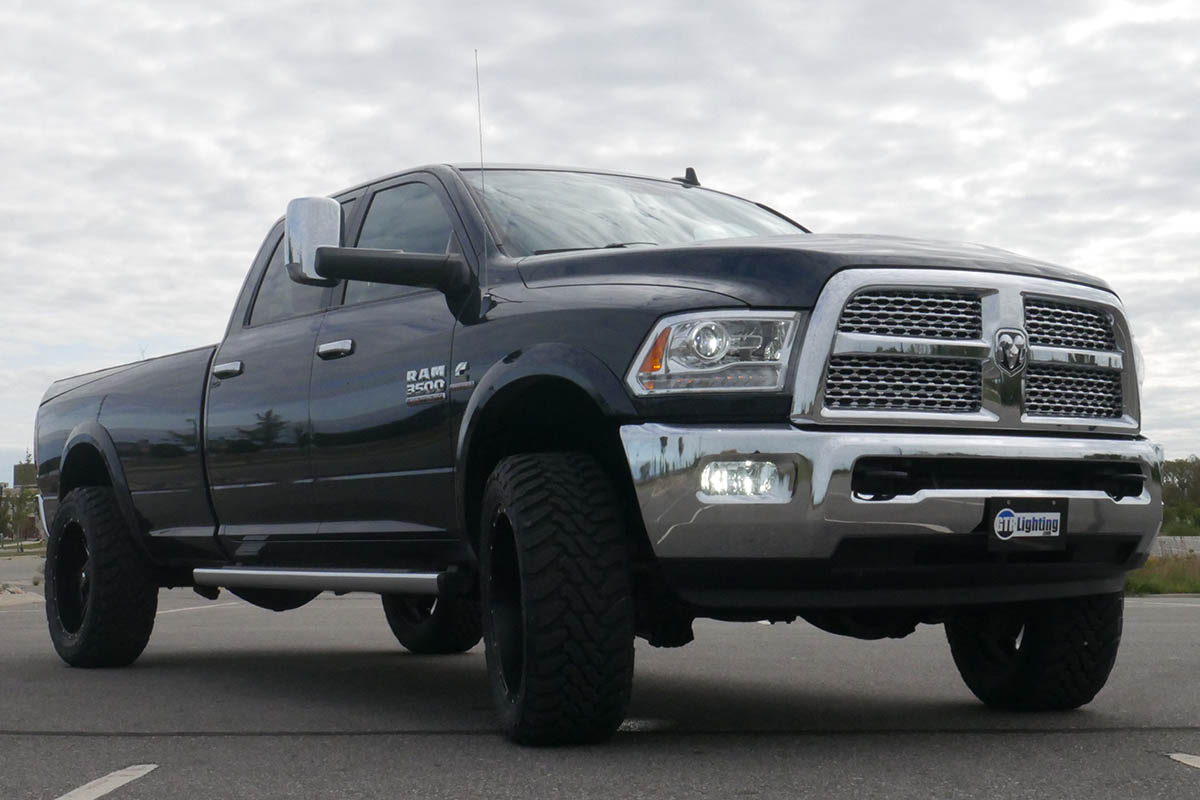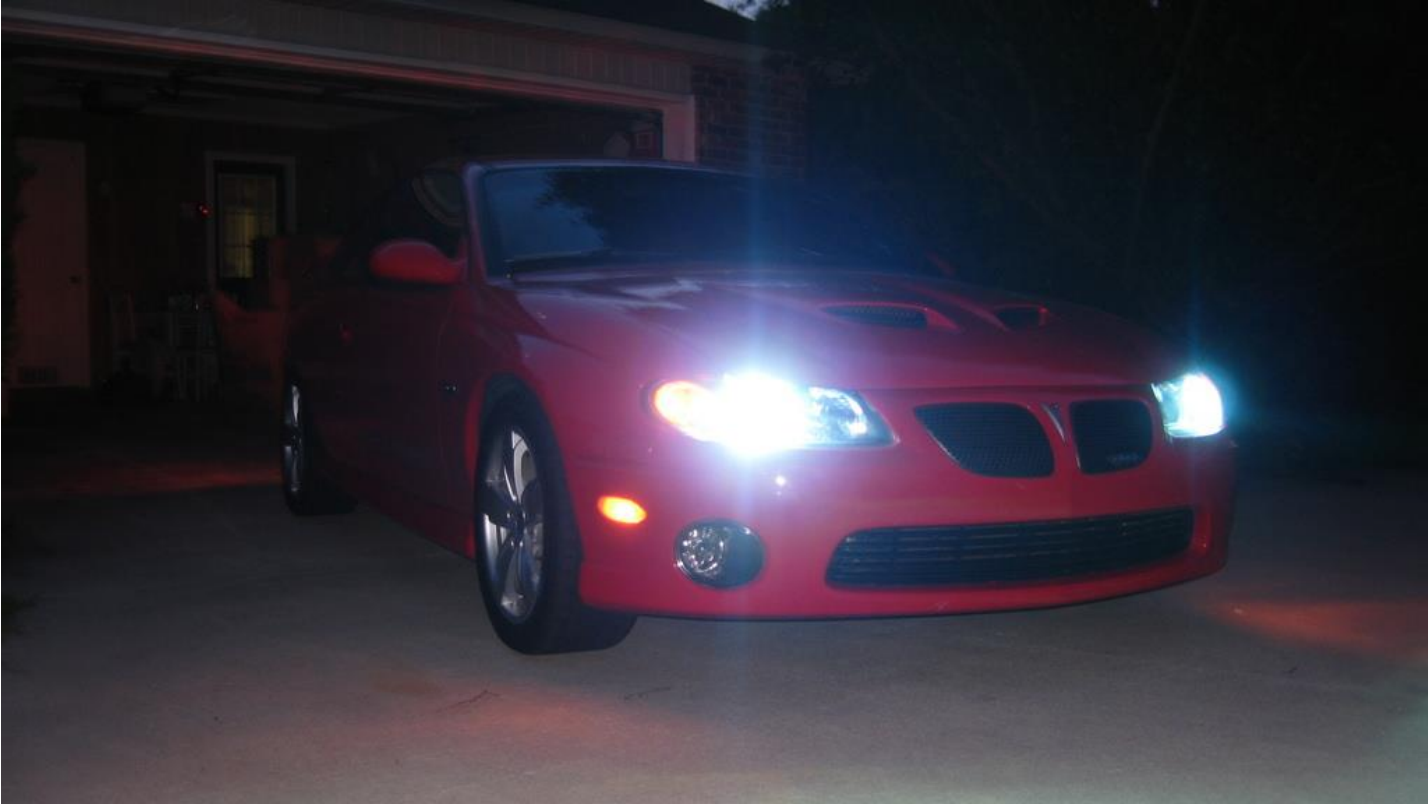It is beneficial for some vehicles to use a relay harness when installing an HID conversion kit. Sometimes if your vehicle has a low voltage issue, DRL or a CANBUS issue the relay harness will bypass the factory wiring and pull power straight from the battery. Also using a relay harness in your HID install is a good way to decrease the warm-up time of your bulbs.
The primary function of an automotive headlight wire harness is to provide power directly from the vehicle’s battery to the lighting system. This allows the bulb, or HID ballast, to operate independently of the vehicle’s original wiring system and can provide a power source that is more consistent.
A lighting relay harness is most commonly used in aftermarket HID conversion kits to bypass the factory wiring in order to get around complicated electronic control systems or to allow a higher rate of current to be delivered to the bulbs. A Relay Wiring Harness utilizes a 30amp fuse protected power wire that directly connects to your positive terminal on the battery. An Automotive Relay is used to pull signal from a source (Headlight connector) that triggers power to be drawn from the battery. There are two sets of cables meant to provide power to an HID ballast. There are also two separate ground wire terminals that need to be connected to the chassis to complete the electrical circuit.
As previously stated, this product is most commonly found used in aftermarket xenon retrofits but can also be beneficial when trying to get the most light output from aftermarket or OEM halogen/incandescent light bulbs. Any lighting system can benefit from increased current capacity in the wiring. GTR Lighting offers a wide array of Plug and Play Relay Wire harnesses for H7, H8, H9, H10, H11, H13, 9004, 9005, 9006, 9007 and more.
What does a Wiring Harness fix?
An Relay Wire Harness is capable of fixing a variety of power related HID lighting issues i.e. intermittent on/off, flickering, delayed start, HID low light output, and uneven brightness.
An HID wiring harness for some vehicles is a safety and assurance item to prevent future problems, and for other vehicles is a necessary requirement to a successful HID installation. A general recommendation is to always use a harness where possible to help extend the life of your HID system, avoid unnecessary headaches, or to boost the output of your halogen light bulbs. Not only are you providing your HID ballasts with adequate power, you are protecting both your vehicle and HID system with the inline fuse that separates the systems.




